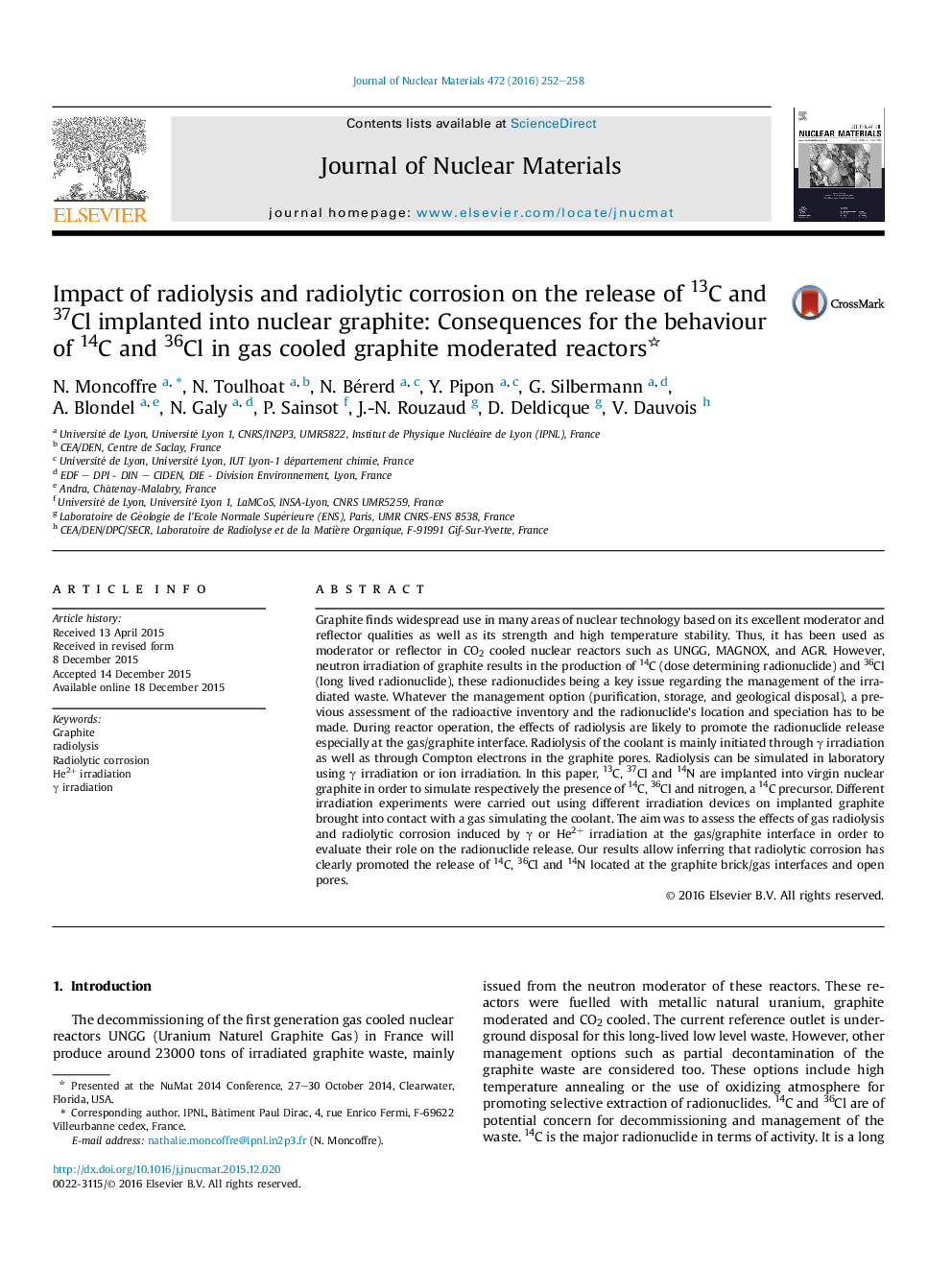| Article ID | Journal | Published Year | Pages | File Type |
|---|---|---|---|---|
| 7964429 | Journal of Nuclear Materials | 2016 | 7 Pages |
Abstract
Graphite finds widespread use in many areas of nuclear technology based on its excellent moderator and reflector qualities as well as its strength and high temperature stability. Thus, it has been used as moderator or reflector in CO2 cooled nuclear reactors such as UNGG, MAGNOX, and AGR. However, neutron irradiation of graphite results in the production of 14C (dose determining radionuclide) and 36Cl (long lived radionuclide), these radionuclides being a key issue regarding the management of the irradiated waste. Whatever the management option (purification, storage, and geological disposal), a previous assessment of the radioactive inventory and the radionuclide's location and speciation has to be made. During reactor operation, the effects of radiolysis are likely to promote the radionuclide release especially at the gas/graphite interface. Radiolysis of the coolant is mainly initiated through γ irradiation as well as through Compton electrons in the graphite pores. Radiolysis can be simulated in laboratory using γ irradiation or ion irradiation. In this paper, 13C, 37Cl and 14N are implanted into virgin nuclear graphite in order to simulate respectively the presence of 14C, 36Cl and nitrogen, a 14C precursor. Different irradiation experiments were carried out using different irradiation devices on implanted graphite brought into contact with a gas simulating the coolant. The aim was to assess the effects of gas radiolysis and radiolytic corrosion induced by γ or He2+ irradiation at the gas/graphite interface in order to evaluate their role on the radionuclide release. Our results allow inferring that radiolytic corrosion has clearly promoted the release of 14C, 36Cl and 14N located at the graphite brick/gas interfaces and open pores.
Keywords
Related Topics
Physical Sciences and Engineering
Energy
Nuclear Energy and Engineering
Authors
N. Moncoffre, N. Toulhoat, N. Bérerd, Y. Pipon, G. Silbermann, A. Blondel, N. Galy, P. Sainsot, J.-N. Rouzaud, D. Deldicque, V. Dauvois,
